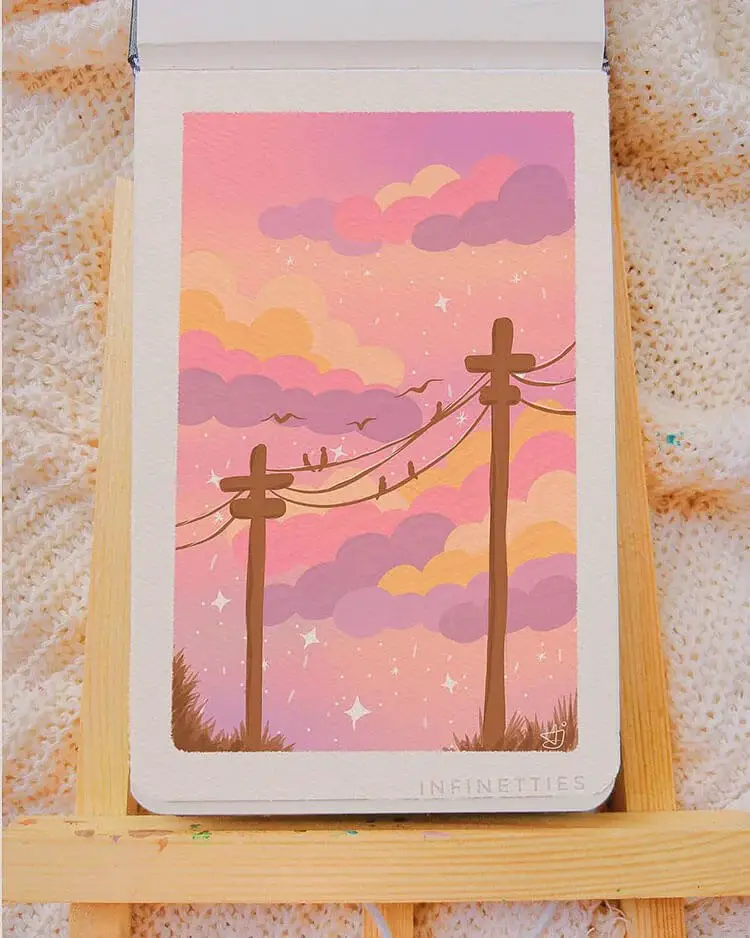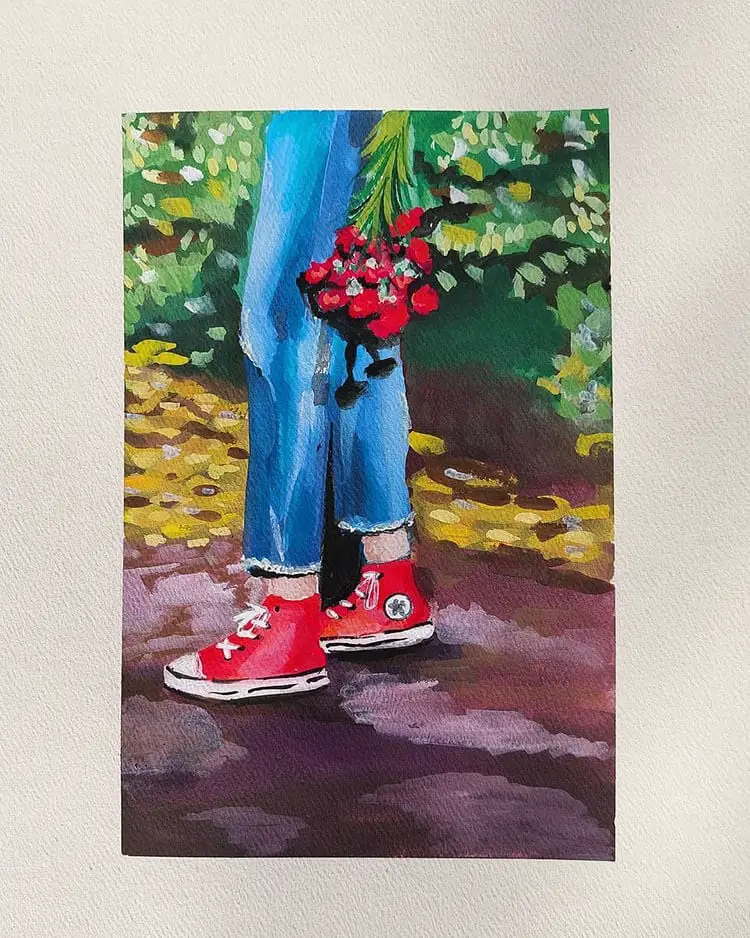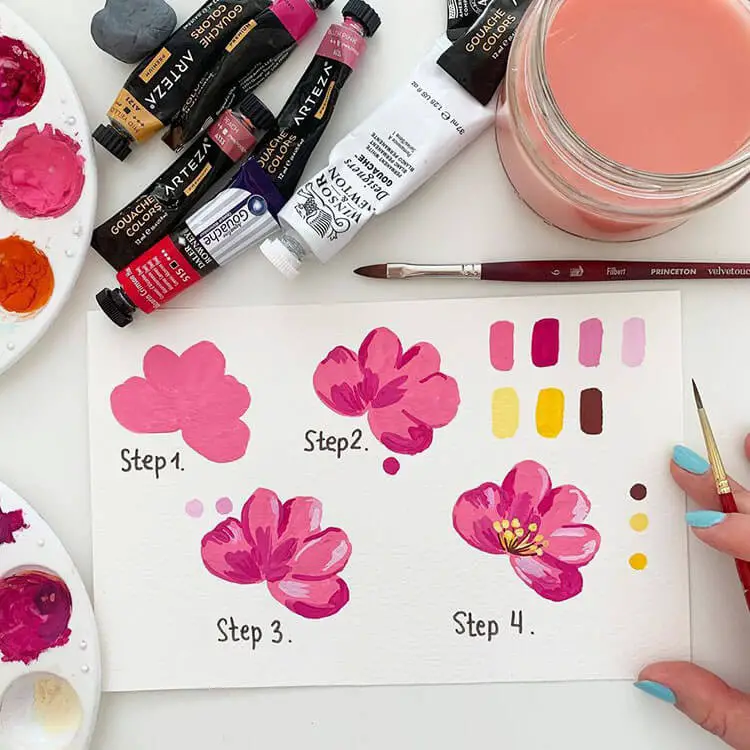What Is Gouache Paint? Plus Gouache Painting Ideas
I’ve developed a newfound appreciation for gouache paintings, characterized by their distinctive, opaque quality. As I delved deeper into this artistic medium, I sought out comprehensive resources to help me refine my skills – stunning gouache painting tutorials and expertly curated references.
What is Gouache?

image source
image source
image source
image source
Gouache paint typically arrives in tube form, unlike its watercolor counterpart which can be found in pans or tubes. To work with this opaque paint, you’ll need the same essentials as with watercolor: paint, water, and high-quality paper designed specifically for water-based mediums. The process of creating with gouache is distinct from traditional watercolor methods. While watercolor artists often begin with light washes and gradually build up to darker tones, gouache allows for a more flexible approach. You can start with rich, dark colors and then subtly layer lighter hues on top, or opt for the opposite sequence. This versatility stems from gouache’s opaque nature, which enables you to cover previously applied pigments without worrying about them showing through. Additionally, when working with gouache, it’s possible to rewet your paint to make adjustments or correct mistakes. However, keep in mind that gouache dries significantly faster than watercolor, and the finished product will have a flat, matte appearance.
Getting Started with Gouache Part 1

image source
image source
image source
image source
Starting with gouache is a straightforward process that requires only a few basic materials. At the most fundamental level, you’ll need gouache paint, brushes, a surface to paint on, water, and a palette for mixing colors. When it comes to selecting gouache paints, you have options ranging from student-grade to artist-grade. The primary distinction between these two types lies in their pigment load.
Getting Started with Gouache Part 2

image source
image source
image source
image source
When working with gouache paint, it’s essential to select the right brushes and surface to achieve optimal results. Brushes designed specifically for watercolor or gouache are ideal, featuring synthetic bristles and a firm yet flexible head. While natural hair brushes can be used, they tend to absorb more water, so this should be considered. For instance, if using natural hair brushes with gouache, you may need to adjust your application technique accordingly.In terms of the painting surface, both watercolor paper and canvas can be suitable options. Watercolor paper is a personal favorite due to its absorbent properties and resistance to buckling when wet. Canvas can also be used, although it’s recommended to prime it first with a gesso or acrylic primer to ensure optimal results.
Getting Started with Gouache Part 3
When working with gouache, two essential elements are water and a mixing palette. Water is crucial for adjusting the consistency of your paint and cleaning your brushes. In contrast, a mixing palette serves as an organized and less messy platform for blending colors. This combination allows artists to achieve precise control over their hues and textures, making it easier to bring their creative vision to life.
With Gouache You Can Sketch First

image source
image source
image source
image source
When working with gouache, it’s common to sketch out your design lightly before building up layers of opaque paint. Although the final product won’t have transparent layers, it’s still advisable to keep your initial sketch subtle to achieve the best results. This allows you to refine your composition and make any necessary adjustments before committing to a specific color scheme.Once your sketch is finalized, you can begin applying gouache with confidence. To minimize mistakes and ensure smooth transitions between colors, start by blocking in the lightest hues first. Gradually work your way up to the darker shades, taking care not to disturb previously painted areas.
With Gouache You Can Go Light to Dark or Dark to Light
What sets gouache paint apart from other mediums is its unique ability to transition seamlessly from light to dark or vice versa, allowing artists to achieve a wide range of tonal effects in a single piece. This characteristic is particularly prized by many artists who appreciate the versatility and expressiveness it brings to their work.
Matte Finish
Gouache paints are renowned for their rapid drying time, resulting in a matte finish. Furthermore, they boast a higher concentration of pigment than watercolors, yielding rich and vibrant hues that make them a popular choice among artists. With gouache, you can enjoy greater control over the colors and achieve a unique visual effect. While it shares some similarities with watercolor, the two mediums have distinct characteristics that set them apart. In this context, gouache’s benefits lie in its ability to produce matte finishes and bold colors, making it an attractive option for those seeking a specific aesthetic. As you explore the world of painting, it’s essential to understand the unique qualities of each medium to create works that truly reflect your artistic vision.











